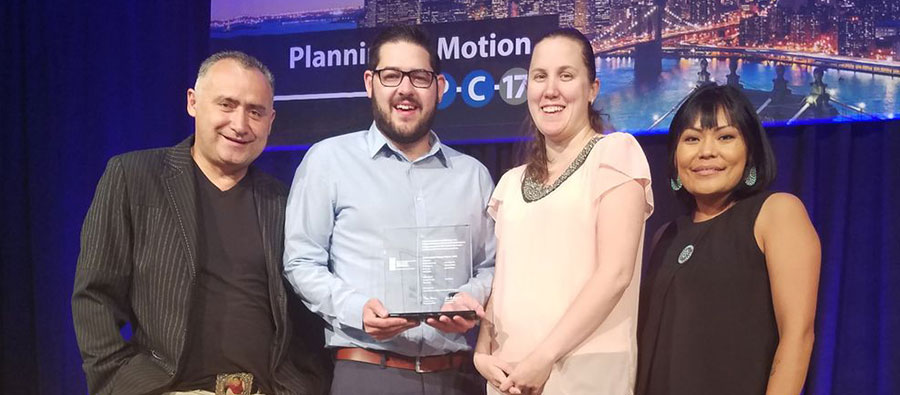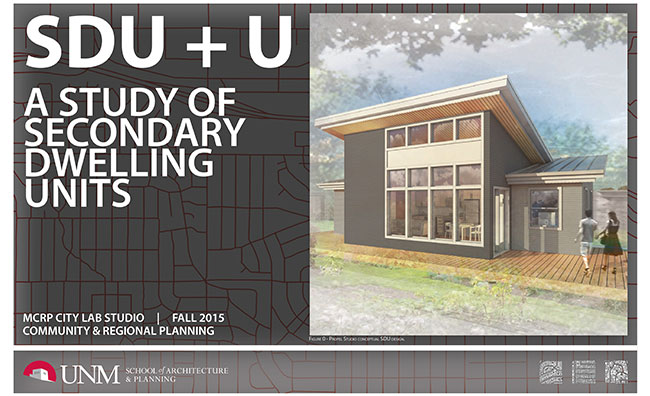
SDU+U: A study of Secondary Dwelling Units
Fall 2015

PROGRAM: Master of Community and Regional Planning
STUDENTS: Melanie Bishop, Kalvin Davis, William Donahoo, Erin Ganaway, Mia Hignojos, Colleen Martinez, Alex Ochoa, Nathan Todd, Elisha Wortham
INSTRUCTORS: Moises Gonzales
Housing affordability and security present challenges for cities around the country. In order to provide more affordable housing, improve urban density, create more transit oriented development, and encourage green infrastructure, the MCRP City Lab Studio proposes the use of Secondary Dwelling Units (SDUs) to be allowed within Albuquerque’s zoning code.
This feasibility analysis proposes the opportunities SDUs may create within Albuquerque. In this study, the studio intends to inform and advise Albuquerque policy makers to include Secondary Dwelling Units within the R-1 single family housing zones as a permissible use. By providing a comprehensive analysis of the feasibility of Secondary Dwelling Units and their benefits, city policy makers can make informed decisions in shaping Albuquerque’s neighborhoods.
In the analysis, the studio begins in discussing the use of SDUs in other cities and the various successes these cities have experienced. Other cities have found SDUs to provide housing for populations currently left out of the housing market, namely, single adults with no children, single parents with 1 or 2 children, elders, and empty nesters. SDUs can allow neighborhoods to provide additional housing into already thriving communities and reduce the amount of sprawl Albuquerque may accrue in attempting to provide more housing in undeveloped areas on the cities edges. But the primary incentive for SDUs is they provide expanded housing options in already established neighborhoods without any negative effects on the neighborhood fabric while helping current homeowners with supplemental income generated through rent.
The studio went further into their feasibility study in looking into economic factors which involved their potential in assisting economic growth and revitalization in neighborhoods through proximity to activity centers. Along with proximity to activity centers, SDUs provides access to mass transit infrastructure already established in neighborhoods for new populations. Further, Secondary Dwelling Units may also help create green infrastructure across the city through creation of bike trails and green space.
Next, the study looks into individual neighborhoods in Albuquerque and uses figure ground diagrams to illustrate how SDUs may fit into the existing neighborhood fabric. Albuquerque presents a vast variety of block and building patterns which calls for a variety of SDU building styles and sizes to fit properly onto properties. Yet, the neighborhood study illustrates the persisting feasibility of SDUs, regardless of settlement patterns.
Finally, the studio provides recommendation for policy changes needed in zoning for the city of Albuquerque to make SDUs compatible within the zoning code.
This studio was awarded the Student Award for Contribution of Planning to Contemporary Issues by the American Planning Association at the 2017 National Planning Conference.
